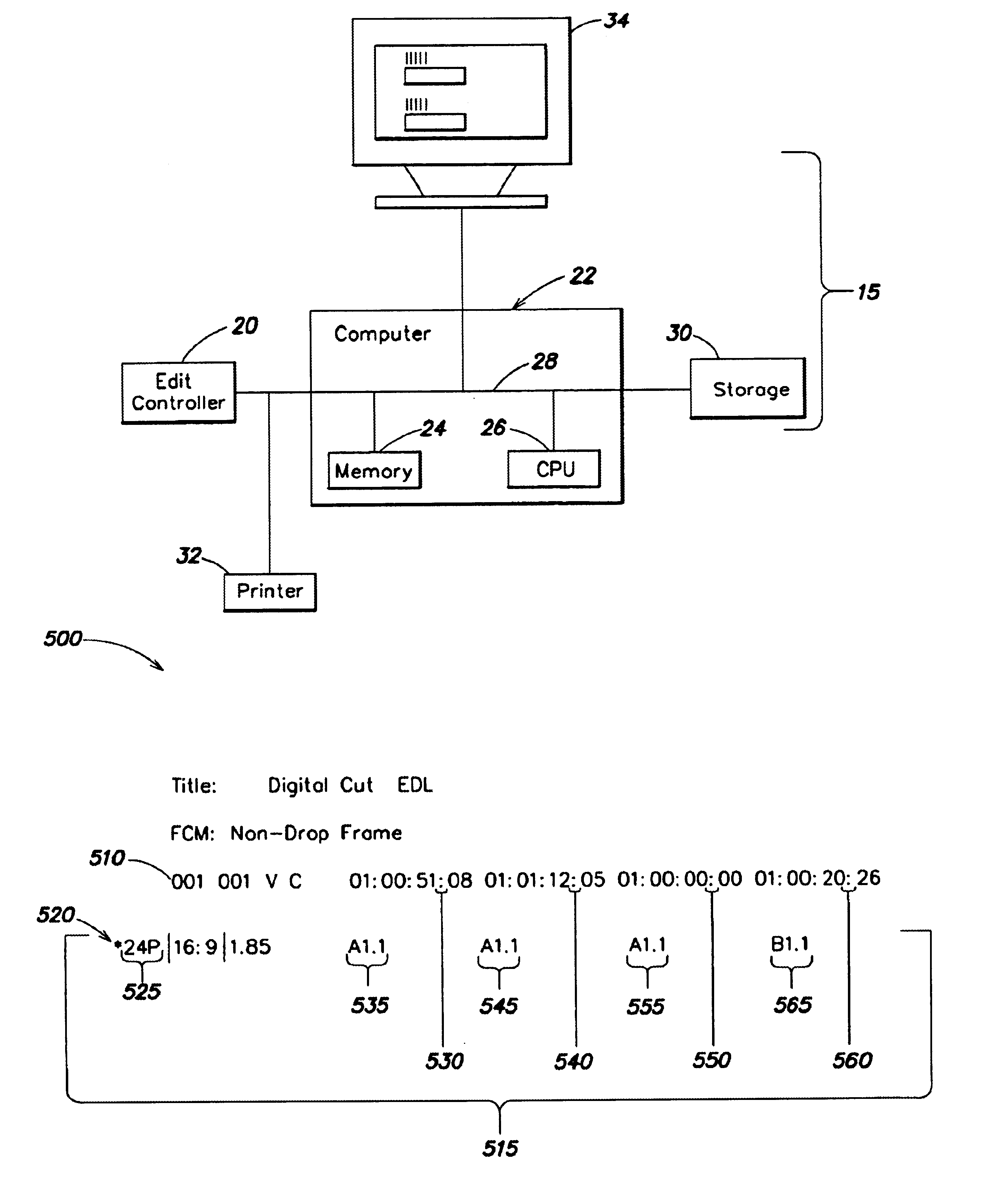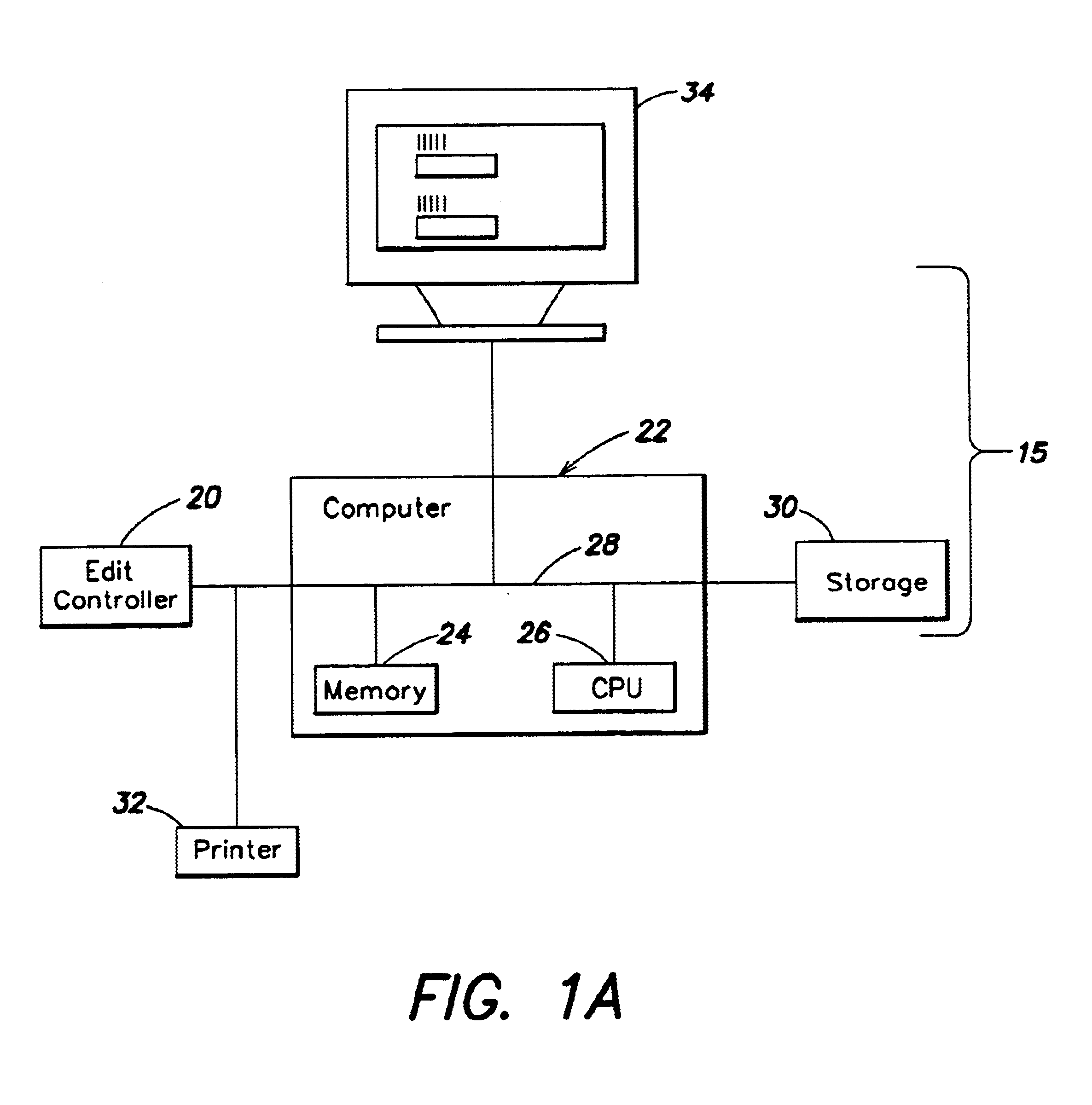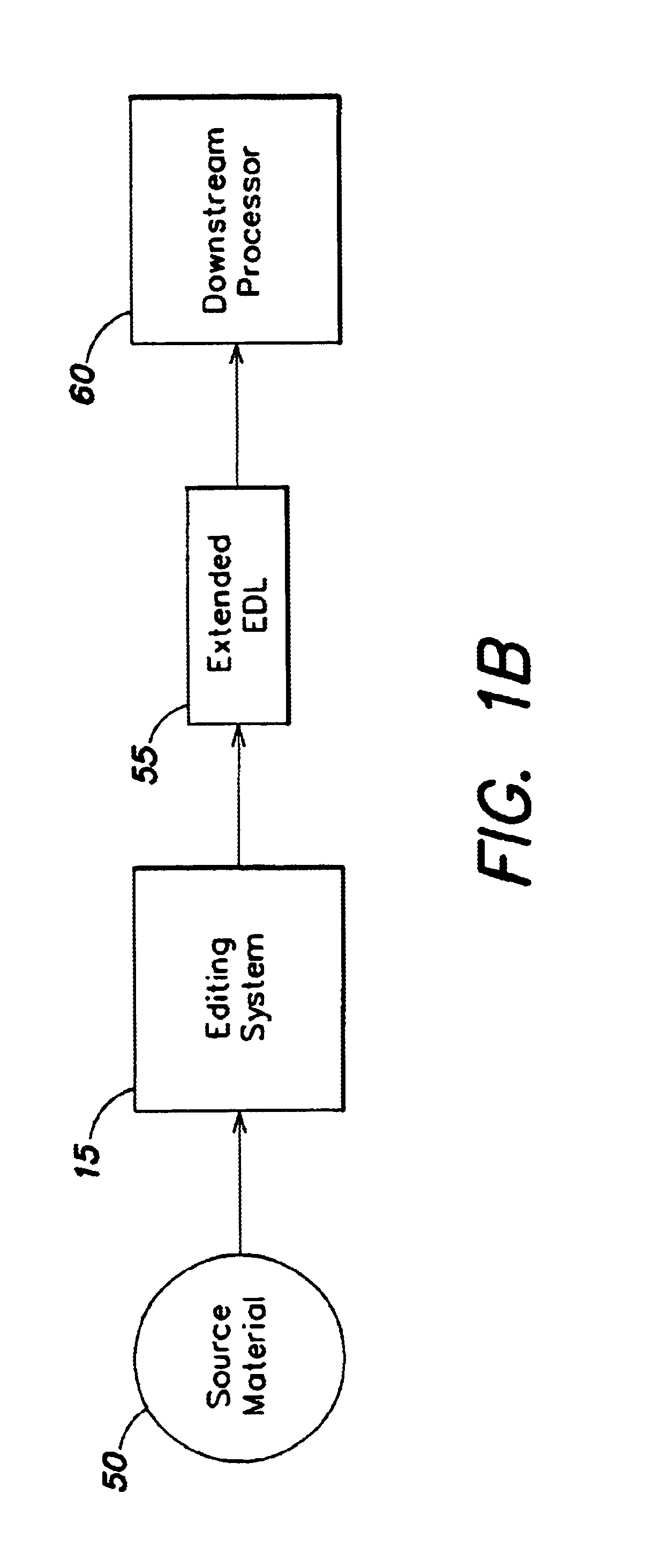Edit decision list for identifying the pull down phase of a video signal
a technology of video signal and decision list, applied in the field of video and film editing, can solve the problems of restricting source material, processing complicating the identification of edit points within a work, and conventional systems not allowing the mixing of video formats in the same edl, so as to facilitate downstream processing
- Summary
- Abstract
- Description
- Claims
- Application Information
AI Technical Summary
Benefits of technology
Problems solved by technology
Method used
Image
Examples
fourth embodiment
In the invention, all source material is 24 fps progressive and the editing is performed in either 24 p mode or as video after a conversion of the progressive material. Material that is edited in 24 p mode is then converted to video using the telecine process. Editing is not restricted to film frame boundaries. In order to maintain a proper pulldown cadence for the output video, the source timecodes and field indicators may require modification.
The “A” and “B” frames are the only frames in the pulldown phase that begin on field 1 of the new video frame boundary. In order to retain a continuos 2 / 3-pulldown relationship, field indicators will need to be added to the EDL to indicate field start and stop for a certain frame. There is a need to readjust the fields, in this embodiment of the invention, based on the fact that a field 1 edit cannot occur with a field 2 edit due to phase problems.
In FIG. 9, the timecodes that are underlined have been adjusted to show the beginning of the fir...
example 1
Dangling Field on an Out Point
A1 A2 B1 B2 B3 C1 | V0 V1 V2 V3 V4 V5
The above representation shows a cut from film originated material to video (interlaced source) material. The MPEG-2 encoder will encode the first two fields with progressive_frame=‘1’, repeat_first_field=‘0’. Then it must decide whether to encode B1, B2 and B3 with progressive_frame=‘1’ repeat_first_field=‘1’. This is the best encoding to preserve the progressive nature of the source. However, since MPEG-2 requires all fields to be paired into frames, this will not work, because it will require pairing the remaining fields as (C1, V0), (V1, V2), (V3, V4) and leave V5 unpaired. In this case the encoder must encode B1, B2 as a frame with progressive_frame=‘1’, repeat_first_field=‘0’ and B3, C1 as a frame with progressive_frame=‘0’, repeat_first_field=‘0’.
example 2
Dangling Field on an in Point
V0 V1 V2 V3 V4 V5 | C2 D1 D2 D3 A1 A2
A similar situation may occur on an in point. The first field after a cut may be a single unpaired field in the 2:3 sequence. In this case the encoder would like to pair D1, D2, D3 into a progressive frame and A1 and A2 into a second progressive frame. However, this is not allowed because C2 would be unpaired. The encoder must encode (C2, D1) as one frame with progressive_frame=‘0’, repeat_first_field=‘1’, and (D2, D3) as another frame with progressive_frame=‘1’ and repeat_first_field=‘0’.
In the general case of mixed video and film originated source material with 2:3 pulldown, making the encoding decisions of when to use progressive_frame requires the ability to look ahead and analyze the implications of future cuts. The extended EDL makes this possible. While there may still be some cases where progressive frames must be encoded as non-progressive, the extended EDL enables the MPEG-2 encoder to make the best possible...
PUM
 Login to View More
Login to View More Abstract
Description
Claims
Application Information
 Login to View More
Login to View More - R&D
- Intellectual Property
- Life Sciences
- Materials
- Tech Scout
- Unparalleled Data Quality
- Higher Quality Content
- 60% Fewer Hallucinations
Browse by: Latest US Patents, China's latest patents, Technical Efficacy Thesaurus, Application Domain, Technology Topic, Popular Technical Reports.
© 2025 PatSnap. All rights reserved.Legal|Privacy policy|Modern Slavery Act Transparency Statement|Sitemap|About US| Contact US: help@patsnap.com



